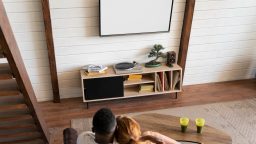Arranging furniture in awkward spaces can be a daunting task, especially when faced with unusual layouts, small rooms, or tricky architectural features. However, with a little creativity and some clever design tricks, you can make even the most challenging spaces feel functional, stylish, and inviting. Whether you’re dealing with a long, narrow room, an oddly shaped corner, or a room with architectural quirks, here’s how to arrange furniture in awkward spaces and make the most of what you’ve got.
- Start with the Room’s Purpose
Before you start rearranging your furniture, think about how you want the space to function. The purpose of the room should dictate the furniture arrangement. For example, in a small living room, the focus might be on creating a comfortable seating area, while in a home office, the priority may be desk placement and storage.
- Living Room: For an awkwardly shaped living room, aim to create a natural flow of movement. Position the furniture in a way that encourages conversation and allows for easy movement between seating areas.
- Bedroom: In a small or oddly shaped bedroom, make sure the bed is the focal point. If the room is narrow, consider floating the bed in the middle of the room to create balance.
- Dining Room: In tight dining areas, try to keep the dining table near the centre of the room with enough space around it for chairs to be pulled out comfortably.
Knowing the room’s function will help guide your decisions and ensure the space works well for your lifestyle.
- Measure and Scale Everything
In awkward spaces, the dimensions of the furniture are crucial. A piece that’s too large can overwhelm a small room, while tiny pieces in a larger room can get lost and look out of place.
- Measure your space: Before purchasing any new furniture or rearranging your current pieces, take precise measurements of your room and furniture. This will give you a better understanding of what fits and where.
- Scale: Choose furniture that fits the scale of the room. In a small room, opt for smaller or more compact pieces like a loveseat instead of a full-sized sofa, or a narrow dining table instead of a wide one. For larger rooms, don’t be afraid to include bigger pieces to fill the space and create a sense of balance.
- Use Multifunctional Furniture
In awkward spaces, it’s important to maximise functionality. Furniture that can serve multiple purposes not only saves space but can also make the room feel more adaptable.
- Sofa Beds: In small living rooms or studios, a sofa bed can be a great option, providing both seating and a place for guests to sleep.
- Storage Ottomans: Ottomans that double as storage are ideal for small living rooms or bedrooms. They provide a place to sit, rest your feet, and store blankets or other items out of sight.
- Foldable Furniture: Folding tables, chairs, and desks can be incredibly useful in tight spaces. When not in use, they can be tucked away to free up more room.
By using multifunctional pieces, you can make the most of your limited space without sacrificing style or comfort.
- Anchor the Room with a Focal Point
Even in an awkwardly shaped room, creating a focal point helps define the space and gives it direction. The focal point can be a piece of furniture, an artwork, or a natural feature, like a fireplace or window.
- Living Room: In a living room, the focal point is usually the TV or fireplace. Arrange seating around the focal point to create a harmonious flow. If the room has multiple focal points (e.g., a large window and a fireplace), position the furniture in a way that allows both to be appreciated.
- Bedroom: In the bedroom, the bed is naturally the focal point. Position it against the largest wall or in the centre of the room, if possible. If the room is oddly shaped, consider a bed with a unique headboard to help it stand out.
- Dining Area: In a dining area, the table should be the focal point. Make sure it’s centrally located in the room, and keep the surrounding area clear to highlight the table and make it the heart of the space.
A clear focal point adds structure and organisation to the room, helping to make even awkward layouts feel cohesive.
- Create Zones for Different Activities
In a room with an unusual shape or layout, it’s helpful to create distinct zones for different activities. This can be especially useful in open-plan spaces, studios, or small rooms where you need to maximise functionality.
- Living Room: If your living room is part of an open-plan space or is narrow, create separate zones for different activities. For example, position the seating area to one side of the room for TV watching or conversation, while the other side can be used for reading or as a workspace.
- Bedroom: In a small or awkward bedroom, use furniture to create zones, such as a separate area for dressing or a small reading nook with a comfortable chair and lamp.
- Dining Room: In tight dining spaces, you might need to make room for the table while also creating a space for additional storage or decorative items. Use rugs, shelving, or curtains to divide the space and give it structure.
Zoning helps organise the space and makes it more functional, even in a room with a challenging layout.
- Use Mirrors to Enhance the Space
Mirrors can work wonders in awkward spaces by making the room feel larger and brighter. A large mirror placed strategically can reflect light and make a small or narrow room feel more expansive.
- Reflective Surfaces: Place mirrors opposite windows or light sources to reflect natural light and open up the space. In a small or narrow room, a mirror on one wall can visually widen the space.
- Artistic Mirrors: Mirrors don’t have to be purely functional. Choose a decorative mirror with an interesting frame to serve as a statement piece that adds style and enhances the room’s design.
Using mirrors effectively can make a room appear larger and more airy, especially in spaces with limited natural light or awkward layouts.
- Embrace Floating Furniture
In spaces with awkward layouts or limited floor area, consider using floating furniture to keep the room feeling open and spacious. Floating furniture means that pieces like sofas, chairs, and tables are not pushed up against walls, but are instead arranged to encourage movement and flow.
- Use Low Furniture: In a small or cramped room, low-profile furniture can make the space feel bigger and less crowded. Opt for sofas and chairs with low backs, which help maintain sightlines and openness.
- Floating Shelves: Instead of bulky bookcases or cabinets, use floating shelves on walls to store books, decor, or plants. This keeps the floor space clear and creates a more streamlined look.
Floating furniture and shelving allow you to create a sense of openness in rooms with limited space.
- Use Rugs to Define Areas
Rugs are an excellent way to define different areas in awkward or open spaces. A rug can create a sense of structure and designate specific zones, especially in larger or open-plan rooms.
- Living Room: In a large or oddly shaped living room, use a rug to define the seating area and make it feel more cohesive. Make sure the rug is large enough to accommodate the furniture, with all pieces either partially or fully on the rug.
- Bedroom: In a small or narrow bedroom, use a rug under the bed to create a sense of comfort and warmth. A rug can also help define the space if the room is split into different zones.
- Dining Room: For a dining room with an awkward layout, a large rug under the dining table can anchor the space and give the room a more balanced look.
Rugs are versatile tools for creating visual separation and helping to define zones within a room, especially when dealing with awkward layouts.
Conclusion
Arranging furniture in awkward spaces requires creativity and thoughtful planning. By defining the room’s purpose, choosing furniture that fits the space, and using clever tricks like zoning, mirrors, and rugs, you can transform any challenging space into a functional and stylish area. With these tips, you’ll be able to make the most of even the most unusual rooms in your home and create a comfortable, inviting atmosphere.





